HAL Shares Soar Over 6% to Hit 52-Week High on Bagging Large Defence Orders
Radhika Bansal
02 Dec 2023
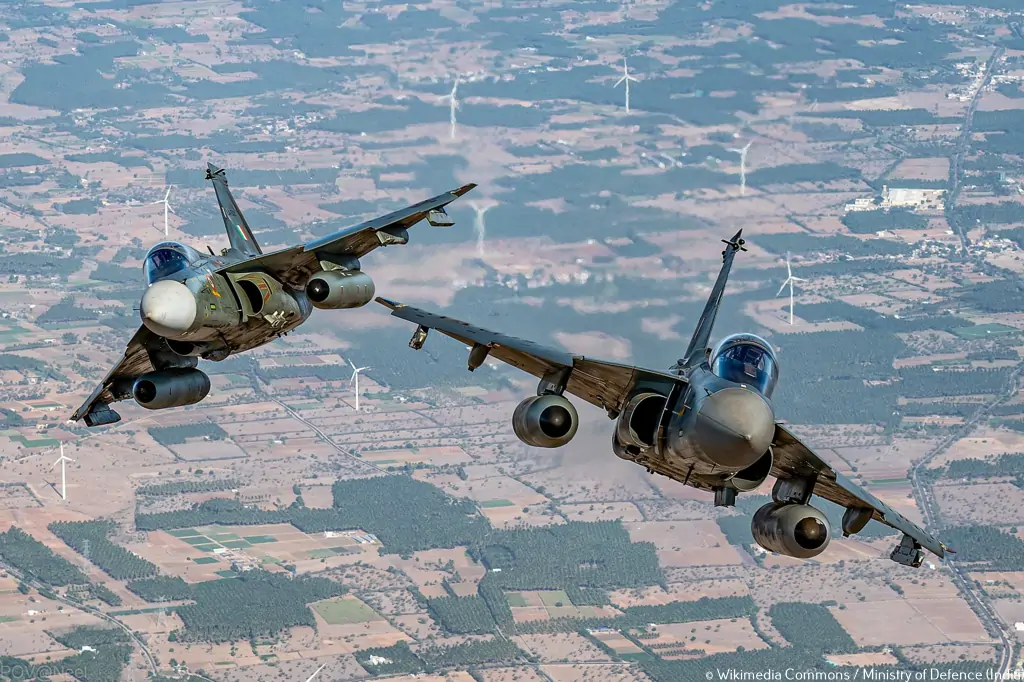
The Ministry of Defence on November 30 accorded an initial approval to procure an additional batch of 97 Tejas light combat aircraft and around 150 Prachand helicopters and other equipment for a mega deal worth INR 2.23 lakh crore to boost the overall combat capability of the armed forces.
"Defence Acquisition Council approves capital acquisition proposals worth INR 2.23 lakh crore to enhance the operational capabilities of the Armed Forces 98% to be sourced from domestic industries in a major boost to ‘Aatmanirbharta’ in defence. Procurement of Light Combat Helicopters & Light Combat Aircraft Mk 1A from HAL gets a nod. Medium Range Anti-Ship Missiles for the surface platform of the Indian Navy accorded approval. Acquisition of Towed Gun System cleared to replace Indian Field Gun," according to the official statement.
The development comes amid a crucial meeting scheduled to be held by Defence Minister Rajnath Singh. This project, estimated to cost around INR 55,000 crore, aims to supplement the existing fleet of 83 Tejas jets.
The new carrier, which can hold at least 28 fighter jets and helicopters and displaces 45,000 tons of water — a measure of size for ships, will be flying the French Rafale jets. India’s first homemade carrier, INS Vikrant, joined the fleet last year and was built by Cochin Shipyard Ltd. The country also has a Russia-made aircraft carrier.
The Defence Acquisition Council (DAC), chaired by Defence Minister Rajnath Singh, cleared the projects which also included the procurement of medium-range anti-ship missiles (MRAShM) for the Indian Navy and the upgrading of 84 Su-30 fighter jets of the Indian Air Force.
Official sources said the additional batch of 97 Tejas Light Combat Aircraft (Mark IA) will be procured at a cost of around INR 67,000 crore. In February 2021, the defence ministry sealed an INR 48,000 crore deal with Hindustan Aeronautics Ltd (HAL)?for the procurement of 83 Tejas MK-1A jets for the IAF. With the additional fleet, the number of indigenously-developed Tejas aircraft being procured by the IAF would go up to 180. Out of the 156 Prachand Light Combat Helicopters (LCH), 90 will be for the Army and 66 will be for the Indian Air Force.
The report also mentioned that India plans to have 160 warships by 2030 and 175 by 2035 at an estimated cost of INR 2 lakh crore. More than 60 vessels of the Indian Navy are currently at various stages of construction, it added. The country is carrying out more warship patrols than ever before amid growing concerns over China’s rising naval prowess.
India has also upgraded the runway facilities at the Andaman and Nicobar Islands allowing the aircraft to land at night, Bloomberg further reported.
The Tejas Mk-1A Light Combat Aircraft is an indigenously designed and manufactured fourth-generation fighter with critical operational capabilities that include an active electronically-scanned array radar, an electronic warfare suite, and is capable of air-to-air refuelling. It is India's first self-made fighter jet and received the final operational clearance for induction into the Indian Air Force as a fully-weaponised fighter jet in February 2019.
Developed by HAL, the 5.8-tonne twin-engine LCH is armed with various weapon systems and is capable of destroying enemy tanks, bunkers, drones and other assets in high-altitude regions. The helicopter possesses modern stealth characteristics, robust armour protection and formidable night attack capability, and it is fully capable of even operating in Siachen, the world's highest battle-field.
Further, the first batch of Prachand Light Combat Helicopters was inducted into the IAF and the Army last year.
Further to maximise indigenisation, the DAC has accorded approval for a major amendment in the Defence Acquisition Procedure (DAP) 2020. It has been decided that henceforth, in all categories of procurement cases, a minimum of 50% of indigenous content shall be in the form of material, components and software that are manufactured in India.
HAL’s Shares Fly High
Hindustan Aeronautics Limited (HAL) is the domestic supplier of Tejas and Prachanda aircraft. Meanwhile, shares of HAL closed 1.65% higher at INR 2,382.30 after soaring over 4% intra-day, while Cochin Shipyard ended close to 4% higher at INR 1,206 apiece on BSE.
Shares of Hindustan Aeronautics (HAL) rallied 5% to hit a fresh 52-week high of INR 2,498 on December 1 after the Defence Acquisition Council (DAC) approved the procurement of light combat helicopter (LCH) for the Air Force and the Army. The S&P BSE Sensex was up 279 points or 0.4% to 67,267 levels as of 9:20 AM.
HAL shares surged 6.72% to touch a year high of INR 2,499 on BSE in morning deals. Around 1.33 lakh shares of the company changed hands on BSE while 21.58 lakh shares traded on NSE. In the past month, the HAL stock has surged over 29% as against a 5% rise in the benchmark Sensex.
HAL is engaged in carrying out the design, development, manufacture, repair and overhaul of aircraft, helicopters, engines and related systems like avionics, instruments and accessories primarily serving the Indian defence programme.
Read next
Air India Completes Title Transfer of 4th A350 Aircraft; Showcase First A350 at WINGS India
Radhika Bansal
02 Dec 2023
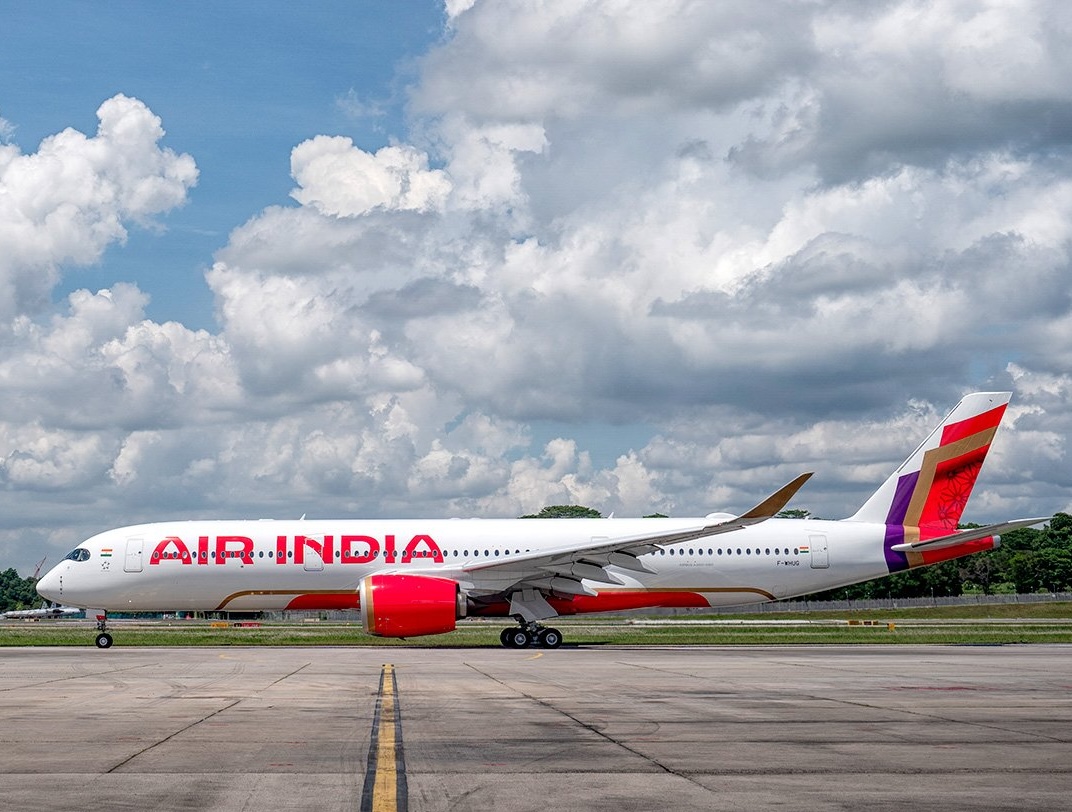
Air India has completed the title transfer of its fourth A350 aircraft, and it is scheduled to arrive in February 2024. The Tata Group-owned carrier expects the first A350-900 aircraft to arrive in India this month.
"On the aircraft front, we completed the title transfer of our fourth A350 aircraft last week, which is scheduled to arrive in February 2024 after livery changes and modifications. We also took delivery of another two A320 neos that will commence service in December," Air India CEO and MD Campbell Wilson said in his weekly message to the staff on Friday.
He also said a brand new A350 of Air India and B737 Max of Air India Express in their new liveries will be featured at the Wings India conference in Hyderabad in January. The Ministry of Civil Aviation in collaboration with industry body FICCI hosts a bi-annual mega aviation event WINGS India Aviation Show in Hyderabad.
The airline has ordered six A350-900 planes and five of them are scheduled for delivery through March 2024. Apart from these, the airline's firm orders for 470 new aircraft include 34 A350-1000s, 20 Boeing 787 Dreamliners, 10 Boeing 777Xs, 140 A320 neos, 70 A321 neos and 190 Boeing 737MAXs.
Air India Ready to Take Delivery of its first A350
The airline has been training its pilots, cabin crew and engineering personnel around the world to welcome the first A350-900, which will also be the first aircraft in Air India’s new livery. However, as these aircraft were initially destined for Aeroflot before the Russia- Ukraine war resulted in a ban, they will not yet sport Air India’s new interiors which are expected to be seen only from August 2024 onwards
As many as six sets of pilots (six co-pilots and six commanders) have already completed their simulator training in Singapore, according to a senior executive at the airline. “All of them are trainers to enable Air India to carry out in-house training,” he added. Airbus is providing airline simulator training slots in Singapore, Toulouse and Miami. Air India will also get its simulators for A350 which will be installed at its soon-to-be-launched training academy so that all simulator training can take place in-house.
Each month two sets of pilots will undergo simulator training as each A 350 will need a total of 13 sets of pilots for ultra-long-haul flights. The training programme for Airbus A320 pilots being moved to A350 includes roughly 13 days of “Cross Crew Qualification” which has two ground sessions, a test, six simulator sessions and four additional ground training sessions on aspects such as low visibility, explained those in the know. Pilots from the airline’s Boeing fleet may also be moved to A350 but will require roughly 45 days of “full endorsement course”.
Three batches of engineers, each from Air India, Vistara and AIX Connect- the three Air India Group airlines- have successfully completed training sessions at the Airbus facility in Toulouse. Specialised courses on structure assessment and engine run-up have been completed, explained another Air India executive. Senior-level executives from the engineering department, along with engineers and technicians, have undergone an A350 General Familiarisation course to ensure comprehensive knowledge about the aircraft.
Air India has also partnered with Singapore International Airline’s maintenance, repair and overhaul arm, SIA Engineering Company, to ensure its engineers get hands-on experience in Airbus A 350’s day-to-day maintenance, aircraft turn-around inspections, and scheduled maintenance activities.
Airbus has also provided review meetings that offer insights into A350 technical intricacies, and future reviews are planned after the arrival of the aircraft to ensure ongoing support with technical issues.
Aircraft to be Deployed on Long Haul Routes
The A350 will not be immediately used on ultra-long haul routes such as the US. It will first undergo DGCA evaluation for about 20 days, after which it will fly domestically for some time for crew familiarisation purposes. The airline plans to use the A350 on long-haul routes such as Europe, Australia and Japan, where it can leverage its superior performance and efficiency.
The A350 can carry up to 325 passengers in a three-class configuration, and fly up to 15,000 km without refuelling. The A350 also offers a more comfortable and quieter cabin, with larger windows, mood lighting and lower cabin altitude.
Long-haul flights will not be among the A350's first passenger routes. India's civil aviation regulator, the Directorate General of Civil Aviation, will evaluate the aircraft for up to 20 days. Following the process, the plane will fly domestically to allow for crew familiarization.
(With Inputs from The Hindu)
Read next
In a major move to bolster its presence at Houston's George Bush Intercontinental Airport (IAH), United Airlines has announced a substantial $2.6 billion investment in the renovation and expansion of Terminal B.
The expansive project, part of the 'United Next' growth strategy, includes the addition of 40 gates, a new United Club lounge facility, and the implementation of a cutting-edge baggage system. This strategic initiative aims to accommodate larger aircraft, enhance passenger experience, and solidify United's position as the largest airline in Houston.
Terminal B Renovation and Expansion
The centerpiece of United's investment is the renovation and expansion of Terminal B at George Bush Intercontinental Airport. The $2.6 billion project is set to transform the terminal, offering a 40% increase in capacity during peak times by 2026 compared to 2023. This substantial growth reflects United's commitment to providing passengers with a modern and efficient travel experience.
Growth in Gate Capacity
As part of the 'United Next' initiative, the airline plans to add 40 gates at Houston's airport to accommodate the influx of larger aircraft. This expansion not only caters to the growing demand for air travel but also positions United as a key player in the region. The increased gate capacity will contribute to smoother operations and reduced congestion, further improving the overall efficiency of the airline's operations.
United Club Lounge and State-of-the-Art Baggage System
In addition to the terminal expansion, United Airlines is set to introduce a new United Club lounge facility, providing passengers with an enhanced travel experience. The airline is also investing in a state-of-the-art baggage system, emphasizing efficiency and reliability in handling passengers' luggage. These additions underscore United's commitment to delivering top-notch services and amenities to its customers.
Economic Impact and Job Creation
United's ambitious expansion plan is not only a boost for air travelers but also for the local economy. The airline, already a significant employer in Houston with over 14,000 employees, hired more than 2,100 people in the area in 2023. It anticipates adding another 1,500 jobs in 2024. Furthermore, the expansion project is expected to create an additional 4,000 construction jobs, injecting vitality into the local job market.
Fleet Expansion and Inaugural A321neo Flight
Coinciding with the announcement, United Airlines celebrated the expansion plans for Terminal B and showcased its first Airbus A321neo, registered as N44501. This aircraft operated the inaugural A321neo flight from Houston to Chicago (ORD). The A321neo is part of United's ambitious plan to add 800 new planes to its fleet between 2023 and 2032, demonstrating the airline's commitment to modernizing its aircraft and improving fuel efficiency.
Conclusion
United Airlines' massive expansion plan for its Houston hub marks a significant milestone in the airline industry. The substantial investment in Terminal B, gate expansion, new lounges, and advanced baggage systems underscores United's dedication to providing passengers with a world-class travel experience. As Houston continues to thrive as a crucial aviation hub, United's growth strategy is poised to contribute not only to the airline's success but also to the economic prosperity of the region.
Read next
In a shocking revelation, the Ryanair Group has become the latest major airline ensnared in a scandal involving unauthorized engine parts supplied by AOG Technics, a little-known London-based organization. The discovery adds to the growing list of global carriers, including United Airlines, Delta Air Lines, American Airlines, Southwest Airlines, Alaska Airlines, and Virgin Australia, facing complications due to components backed by falsified certification documents.
Discovery of Unauthorized Parts
Ryanair uncovered unauthorized parts during scheduled maintenance checks on engines sent to overhaul centers in Texas and Brazil in recent months. The CFM56 engines, manufactured by CFM International, were found to contain suspect components supplied by AOG Technics, leading to concerns about the widespread distribution of these falsified parts.
AOG Technics Under Scrutiny
Aviation authorities and regulators worldwide have accused AOG Technics of supplying thousands of engine parts with fake certification documents for both Airbus and Boeing aircraft. The scandal has prompted a thorough investigation into the practices of AOG Technics and raised questions about the efficacy of the supply chain oversight in the aviation industry.
Impact on Ryanair
Ryanair, operating a substantial fleet of 540 Boeing 737 aircraft with around 1,500 engines, is not immune to the repercussions of the scandal. CEO Michael O’Leary stated that the airline had never engaged in direct business with AOG Technics. Instead, the suspect components entered Ryanair's fleet through third-party channels. While the rogue parts have been promptly removed, the incident highlights the vulnerabilities in the complex web of suppliers and intermediaries within the aviation supply chain.
Global Ramifications
The CFM56 engine, affected by the scandal, is one of the most widely used aero engines globally. CFM International, a joint venture between Safran of France and General Electric of the USA, reported finding 126 CFM-56 engines containing suspect parts sold by AOG Technics. The scandal has prompted a global directive for airlines to inspect their spare CFM engine parts inventories, as some engines fitted with unauthorized components were discovered in repair shops.
Calls for Tighter Controls
In the aftermath of the engine parts scandal, Ryanair's CEO, Michael O’Leary, emphasized the need for stricter controls over third-party suppliers of jet engine parts. Expressing bewilderment at how unauthorized components infiltrated the supply chain despite existing documentation processes, O’Leary called for a reevaluation of the industry's oversight mechanisms.
Conclusion
The revelation of unauthorized engine parts in Ryanair's fleet adds another layer to the ongoing scandal involving AOG Technics. The incident underscores the challenges faced by airlines in ensuring the integrity of their supply chains and the urgent need for enhanced controls and scrutiny over third-party suppliers. As aviation authorities worldwide investigate the extent of the issue, the industry faces a critical juncture in reevaluating and fortifying its supply chain processes to prevent future incidents of this nature.
Read next
GE Aerospace and China Airlines Ink Long-Term Deal for Boeing 747-400F Engine Support
Abhishek Nayar
02 Dec 2023
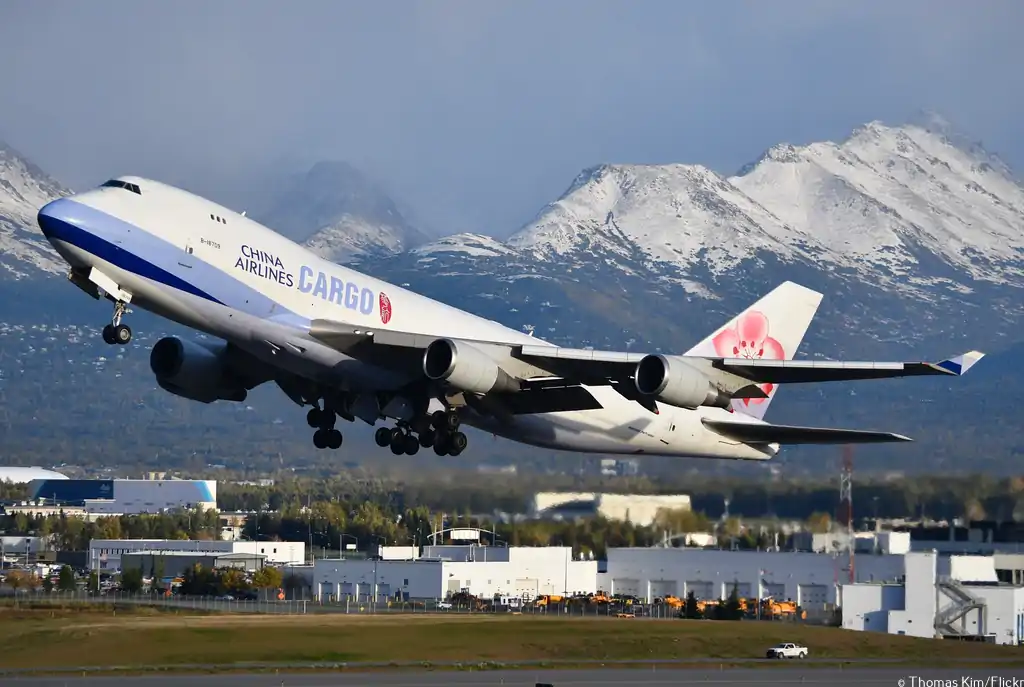
In a strategic move announced on November 30, General Electric (GE) Aerospace and China Airlines have entered into a long-term agreement aimed at enhancing the maintenance and performance of China Airlines' Boeing 747-400F engines. The Taiwan-based airline has chosen GE Aerospace's TrueChoice services to oversee the upkeep of its GE CF6 engines, signaling a continuation of a partnership that dates back to 1999.
TrueChoice Services for Boeing 747-400F CF6 Engines
Under the agreement, GE Aerospace, headquartered in Cincinnati, Ohio, will assume responsibility for managing the high-pressure compressor airfoils of China Airlines' Boeing 747-400F CF6 engines. The TrueChoice service suite, touted for its adaptability to customer demands and operational priorities, will be leveraged to handle the maintenance and replacement of critical components during engine repairs. TrueChoice, with its comprehensive range of services and materials, is designed to allow airlines, lessors, and Maintenance, Repair, and Overhaul (MRO) providers to maximize the value of their assets over the entire life cycle.
Russel Stokes' Perspective
Russel Stokes, President and CEO of Commercial Engines and Services at GE Aerospace, expressed his gratitude for China Airlines' continued trust in GE as an Original Equipment Manufacturer (OEM) for engine maintenance solutions. He highlighted the company's commitment to delivering competitive and cost-effective solutions, drawing on over 475 million flight hours of experience with CF6 engines to enhance products and extend the time these engines spend in operation.
China Airlines' Fleet Dynamics
China Airlines has been a customer of GE Aerospace since 1999, initially ordering 13 GE CF6-powered Boeing 747-400F aircraft. The airline currently operates 13 Boeing 747-400F freighters, a fleet it will maintain for the foreseeable future as it lacks Boeing 747-8Fs capable of carrying outsized cargo. Notably, six of these 13 aircraft are presently inactive, with five undergoing maintenance.
Transition to Modern Freighters
In addition to its Boeing 747-400F fleet, China Airlines operates seven Boeing 777Fs, with an average age of 1.8 years. The airline's strategic move to add four more 777Fs in January 2022, amid the challenges posed by the pandemic, has proven pivotal in maintaining profitability. The delivery of these aircraft between November 2020 and August 2023 further solidifies China Airlines' commitment to modern and efficient freighter options.
Future Outlook
Looking ahead, China Airlines still has three Boeing 777Fs pending delivery, along with 18 Boeing 787-9 and six 787-10 aircraft on order, according to Boeing's unfilled orders data. The airline's Chairman, Hsieh Su-Chien, emphasized the critical role the 777F has played in the company's pandemic resilience strategy, indicating a positive trajectory for its long-term growth.
Conclusion
The recent agreement between GE Aerospace and China Airlines underscores the importance of reliable and innovative maintenance solutions in sustaining the operational efficiency of aging fleets. As the aviation industry continues to evolve, partnerships like these contribute to the longevity and performance optimization of aircraft engines, ensuring airlines can meet the demands of a dynamic and competitive market.
Read next
Southwest Airlines Nearing New Labor Deal with Pilots' Union Ahead of Holiday Season
Abhishek Nayar
02 Dec 2023

In a significant development for Southwest Airlines and its pilots, the airline is reportedly on the verge of finalizing a new labor deal with its pilots' union just in time for the holiday season. This positive development has been well-received in the market, as evidenced by the 3.4% increase in the company's shares during afternoon trade.
Negotiations Overview
According to information from a reliable source familiar with the negotiations, both Southwest Airlines and its pilots' union are making significant strides towards reaching an agreement. The negotiations have progressed to a point where the parties are optimistic about finalizing the deal soon. While the specifics of the agreement have not been disclosed, it is anticipated that the process may take a couple of weeks to address the remaining outstanding issues.
Southwest's Statement
In response to inquiries, Southwest Airlines released an emailed statement to Reuters, confirming the ongoing negotiations and expressing commitment to achieving a mutually beneficial agreement. The statement read, "Both negotiating teams are working hard to close out the few remaining items." Furthermore, the company emphasized its dedication to reaching a deal that not only rewards its pilots but also positions them competitively within the industry.
Industry Context
The negotiations between North American pilots and airline management have been a focal point this year, with demands for improved pay and working conditions taking center stage. The push for better compensation and working terms has been a common theme in talks between airline management and pilot and flight attendant unions.
Earlier Successes in the Airline Industry
Southwest's progress in reaching a tentative agreement with the Transport Workers Union Local 556, representing nearly 19,000 flight attendants, in October is indicative of a broader trend in the industry. Major carriers, including American Airlines, Delta, and United Airlines, successfully concluded agreements with their respective pilot unions earlier this year. These developments highlight the ongoing efforts within the airline industry to address the concerns of its workforce and foster more positive labor relations.
Conclusion
As Southwest Airlines and its pilots' union inch closer to a new labor deal, the industry watches with anticipation. The positive market response and the commitment expressed by both parties indicate a willingness to find common ground and ensure that the airline's pilots are adequately rewarded and competitively positioned. The upcoming weeks will likely see the resolution of the remaining issues, bringing a sense of stability and satisfaction for both Southwest Airlines and its pilots as they head into the holiday season.
With Inputs from Reuters


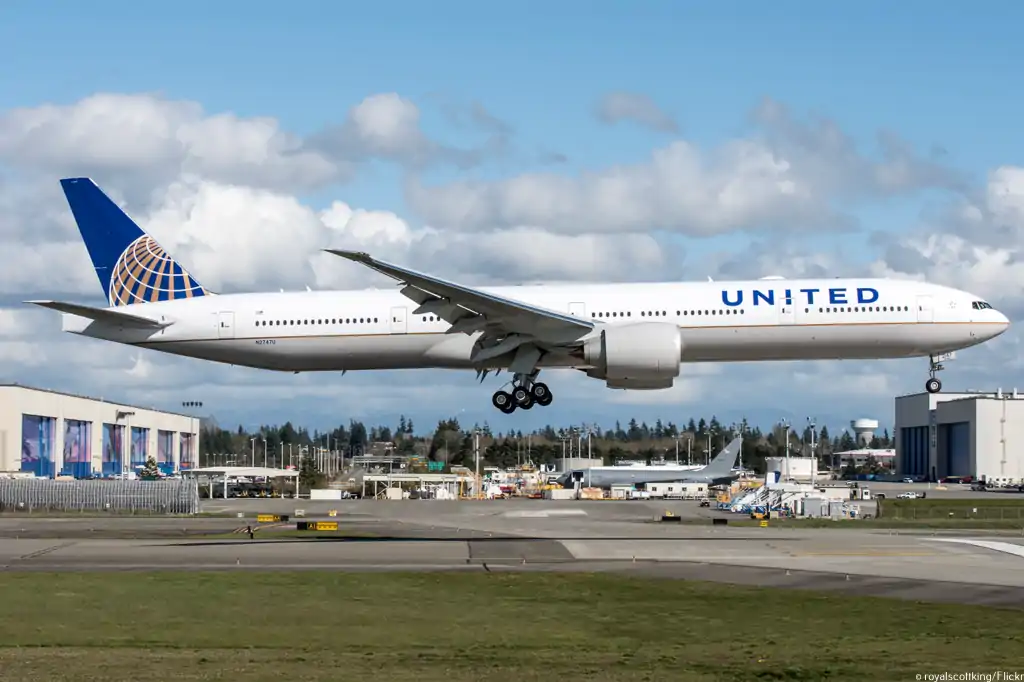
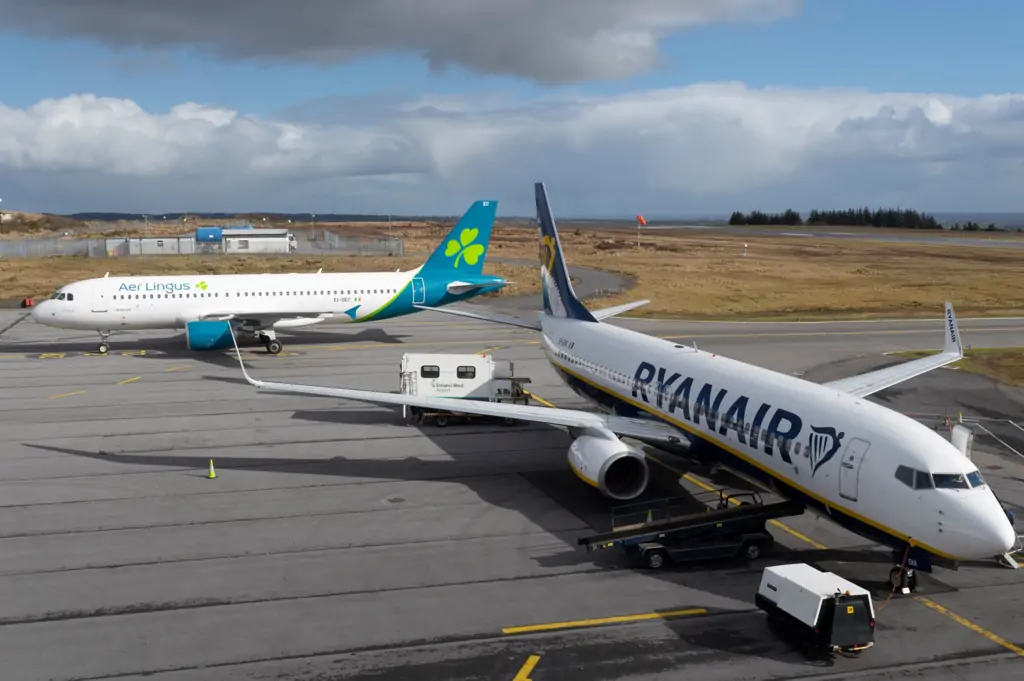
Comment